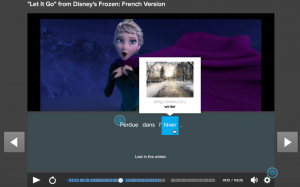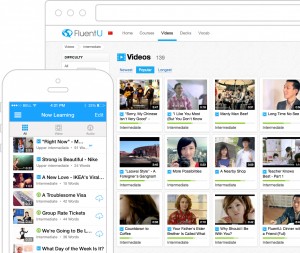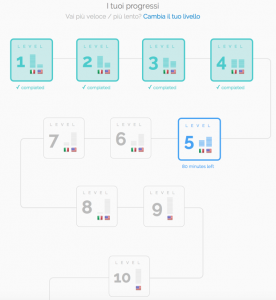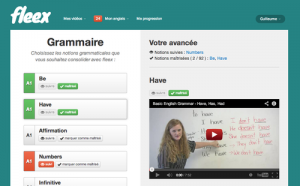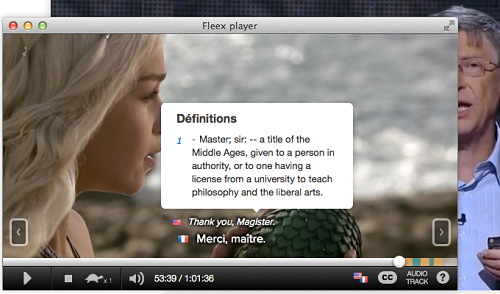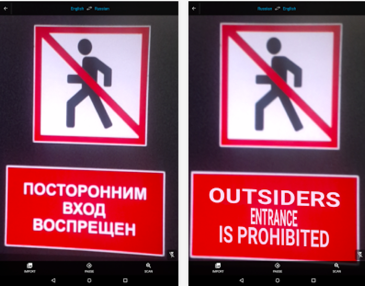Language Learning Outside the Box: Innovative Technology-Enhanced Language Learning
I’ve always looked for different ways to learn a language. In fact, I learned English by (besides the formal classroom curriculum in K12 education), by listening to music (cassettes!) and translating the lyrics, playing movies in English with subtitles using the SAP (secondary audio program) functionality which played the original audio instead of the customary dubbed versions in my native Brazil (for which interestingly enough, I coincidentally ended up acting in a commercial years later after moving to the US), singing in the shower (I won’t get into details on that one), and more…
We’ve all heard of (now) traditional technology-assisted language learning programs such as Rosetta Stone, LiveMocha, and many others…
Many of these systems are great, but success is ultimately dependent upon the student’s dedication, goals, time set aside for practice, disposition to learn, exposure to the target language in different media and situations…
I’ve always had mixed feelings toward Rosetta Stone not because it doesn’t work, but because it is marketed to the masses, while it takes a special learner profile to be “entertained” enough by a glorified flash card-based program to stick to it and actually learn advanced language skills. I didn’t say it is impossible to learn advanced language skills using the Rosetta Stone (and similar) methodologies, but the student retention level speaks for itself. Here’s a useful review.
Having said that, it is always refreshing to see different, innovative takes on technology-assisted language learning, and THAT’S what this post is about. I’ll list a few here with an explanation on why they’re innovative, not on their efficacy. The criterium is is “thinking outside the [traditional language learning] box”.
FluentU
This service’s creative approach is to reuse videos readily available on the Web (e.g. Youtube) to create lessons around them according to the student’s level of knowledge of the given language.
There are 2 modes: Learn and Watch. In the Learn mode, students are presented with excerpts from certain videos, images, and sounds, along with transcripts with highlighted vocabulary and grammar points.
In watch mode, the students have a chance to see what was practiced in the lessons in context, as different videos play in their entirety, captions and illustrated translations and language tips overlap the video as the student hovers over certain words.
Videos are broken down into small parts of speech complete with word/phrase lists that can be studied in flashcards and audio playback.
Fleex.Tv
Fleex TV is one of the services that adopt the “use videos that aren’t made for language learning purposes”, well, for language learning purposes. From a learner’s emotional connectivity to the content and the (daunting task that it can be) of language acquisition, I personally argue that learning through what you love is KEY to learning anything, especially languages. Without geeking out too much on hypothesis of language acquisition, Krashen’s Affective Filter Hypothesis backs me up here.
By adding language learning content and activities around what (most people) will identify with: videos in various areas of interest, rather than the (normally stale) videos made for didactic purposes, the educators here provide learners a chance to further break down the filter or barrier that may come with the challenge of acquiring a new language.
The portal provides curated video-based language lessons that include grammar, vocabulary, culture, and more, as a means to prepare students for what they’ll see in the videos.
Its main traction is the fact that lessons are, again, built around TV series, TED Talks, and other content that isn’t focused on language learning, providing an authentic way to learn. Beware that the use of some of its content (e.g. Netflix) require a membership, while others (e.g. PopCorn Time) are supporting piracy. On the bright side, there are other LEGAL and FREE content such as TED Talk and Youtube videos.
Learner progress is very well marked via a visual learning map.
Duolingo
I’ve already talked about Duolingo here. In essence it is a very innovative language learning service because of, at least, the following:
- It helps translate the Web (in partnership with Google)
- It contains verification elements (rewards and levels are linked to how well you perform in the application)
- The curricula are instructionally sound and well-designed
- It is offered on the Web, for iOS, and for Android platforms
- It is FREE for life

Google Translate
Google acquired an innovative language translation service called WordLens which allows you to, via your mobile device’s camera, look at the world around you and see printed language translated in context, before your eyes.
This functionality was brought into the Google Translate mobile apps. While not exactly labeled a “language learning” technology, it can definitely help one learn in a real-world, authentic context.
Have you heard of or used any innovative language acquisition technology/curriculum?
Please share in the comments!
Silva E (2015-04-17 10:19:09). Language Learning Outside the Box: Innovative Technology-Enhanced Language Learning. Enzo Silva blog. Retrieved: Apr 04, 2025, from https://enzosilva.com/language-learning-outside-the-box-innovative-technology-enhanced-language-learning/



